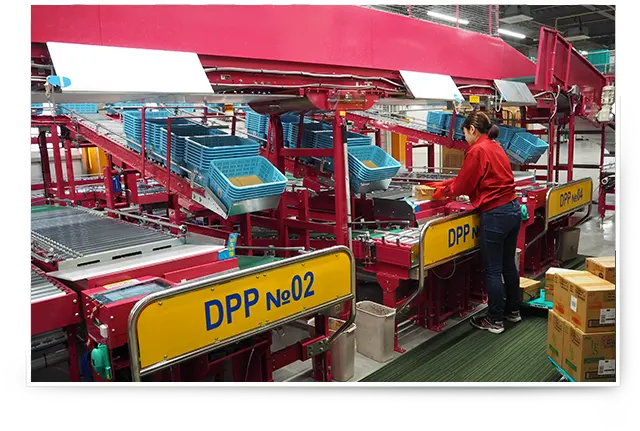In Dec 1898, the cosmetics and sundries dealer "Oboko-go Kadokura Branch" was established in Semba, Osaka, by Tanejiro Kadokura, the founder of the company. Products handled at that time included white powder, lotion, hair oil, bottles, toothpaste, tooth brushes, soap, and gray hair dye. It was a time when toothpaste and soap were gradually becoming popular in the lives of ordinary people, and cosmetics were beginning to take root as daily necessities rather than luxuries.
The Kadokura branch attracted attention with its unique advertising and thorough cash business, which was rare among wholesalers at the time, and became famous for its boldness and firmness. The Kadokura Branch was one of the first to introduce a holiday system, to allow employees to participate in management, to make sales trips to rural areas, and to expand overseas. At the same time, the Branch always put the customer first by selling only the best products at low margins and distributing price lists for various cosmetics to suppliers, and it grew significantly along with changes in the national lifestyle and market environment.
History (Historical Table)
1898- "Oboko-go Kakugura Branch" is established in Semba
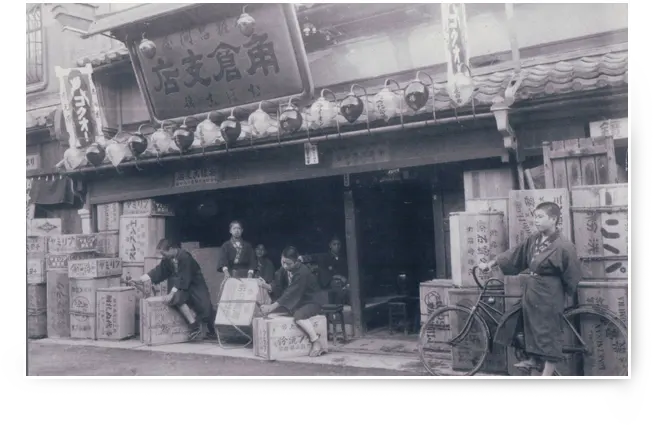
OBOKOGO Kakugura Branch" was established in the west part of Kyuhoji Bridge in Osaka as a cosmetics and sundries merchant.
Established a once-a-month holiday system and set up a telephone.
Reorganized and changed the company name to "Limited Partnership Kadokura Shoten". A watchman was selected as the person in charge.
In order to expand business, the limited partnership was reorganized as a joint-stock company and the trade name was changed to "Kadokura Shoten Co.
Dec 1 is designated as the anniversary of the founding of the company.
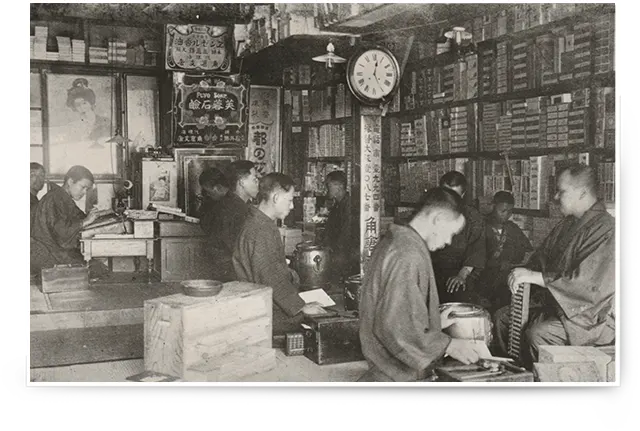

1938- Changed the company name to Taiso Co., Ltd. and entered a new era
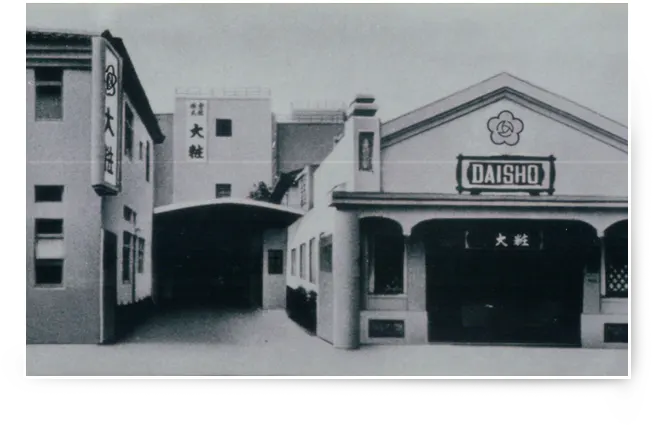
In 1945, during the Second World War, the Senba area was severely damaged in an air raid. Kadokura Shoten was no exception, and although the company building and its products were completely destroyed by fire, the company quickly resumed business using a hastily constructed office in a warehouse that had been burned down. The company continued to supply goods to the people in need of daily necessities.
In the miraculously recovering Japanese economy, manufacturers of cosmetics and other products rose to prominence, and new products were introduced to the market one after another, riding the wave of economic recovery.
Sincerity and Honesty were the hallmarks of Kadokura Shoten's business during the chaotic period before and after World War II, and the company also achieved a remarkable recovery, earning the trust of its customers.
Tokyo Branch (Chiyoda-ku, Tokyo) opened to expand sales channels.
The head office building was completely destroyed by fire in an air raid, and all of the company's inventory was destroyed.
Shareholders were recruited from among sales partners, suppliers, and employees.
Changed the company name to "Daiso Co.
Established Taisodo as a foothold for full-fledged expansion into Tokyo.
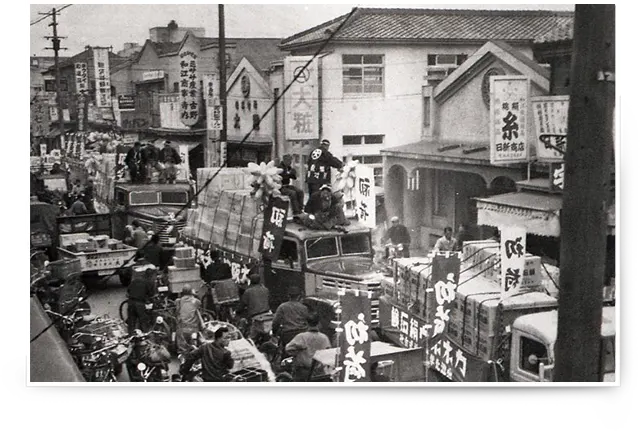

1958- Full-scale business expansion and advanced internal reforms
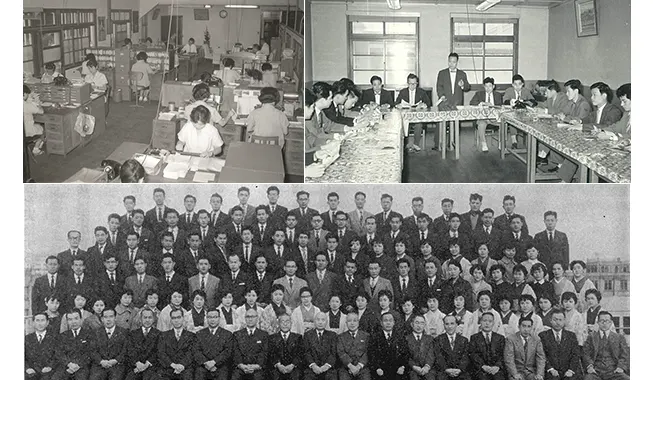
In the 1950s, the Japanese economy experienced rapid growth at a pace unparalleled in the world, with the introduction of technology from overseas and increased capital investment to produce products. In the cosmetics industry, "institutional products" emerged in place of the traditional "general products. In the cosmetics industry, "institutional products" replaced the traditional "general products," and "door-to-door sales products" also grew significantly, ushering in an era of fierce competition. The retail industry also experienced an unprecedented boom in consumption, and overselling became widespread and normalized in the retail market, while competition continued to intensify.
Around this time, Dairyo began to receive many requests for management support and assistance from wholesalers in the same industry in other parts of Japan. Amid the debate over the irrelevance of wholesalers, Taisyo decided that it should establish a nationwide sales network, and the support and assistance of its fellow wholesalers prompted the company to expand into the Tokyo, Nagoya, Kinki, and Kyushu regions. The company also began to expand its product lineup. At the same time, the internal organization was reformed to establish a modern and rational management policy.
Following the Nagoya Branch Office (Nagoya, Aichi Prefecture), the Tokyo Branch Office (Chiyoda-ku, Tokyo) was opened.
A personnel evaluation system was introduced, and the company shifted from a seniority-based system to a selection-based system.
Commended by the Minister of International Trade and Industry as a company contributing to exports.
Opened Osaka Branch Office (Suita City, Osaka) to accommodate business expansion.
Introduced computers in all offices ahead of other companies in the industry.
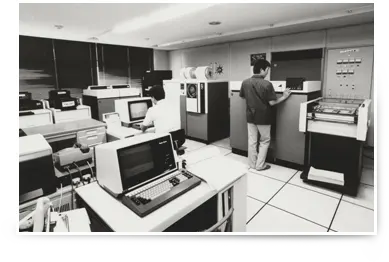

1973- Time for reform as Paltac Corporation, based on trust
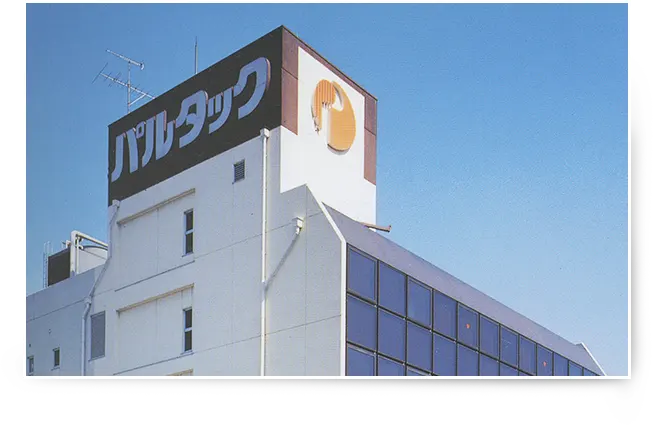
The Japanese economy entered a period of slowdown from a period of high growth following the first oil shock in 1973, and as recession and inflation worsened, consumers shifted their preferences from spending to saving. The distribution industry was also in turmoil, with manufacturers and wholesalers merging and merging, and small and medium-sized retailers going bankrupt one after another. Against this backdrop, Taiso promoted management rationalization and grouping with wholesalers throughout Japan. In 1976, the company changed its name to "Paltac Corporation" and all group companies took on the Paltac name.
From the 1980s onward, the rapid development of Convenience stores, the rise of Home centers, and the birth of new sensibility stores such as fancy and variety stores. The Section was faced with the challenge of responding to the increasing volume of goods and the fragmentation and subdivision of orders, and Paltac steadily proceeded with site acquisition and capital investment, with the expansion and streamlining of distribution functions as key strategies.
Rationalization of delivery through the establishment of an independent Delivery Department.
Company name changed to "Paltac Corporation"
Held the 1st Paltac Fair.
Partac is approved by the Japan Securities Dealers Association as an OTC-registered stock and begins trading in Tokyo and Osaka.
Commenced consignment production of "vinyl umbrellas" in Taiwan.
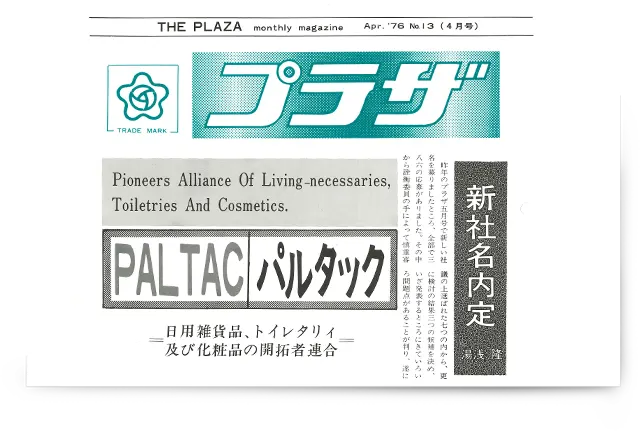

1995- Birth of "New Paltac" and start of nationwide RDC concept
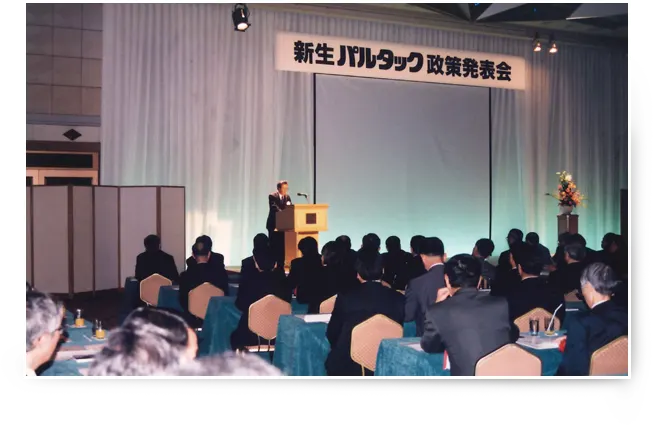
In the early 1990s, after the collapse of the bubble economy, the Japanese economy entered the so-called Heisei recession. In the distribution industry, in addition to rationalization and consolidation of distribution, deregulation of the Large-scale Retail Stores Law, tighter application of the Antimonopoly Law, resale issues, etc., combined to dramatically change the distribution environment, with rapid expansion of the scale of wide-area mass merchandisers and the launch of private brand products. In addition, the rapid expansion of wide-area mass merchandisers and the launch of PB products have dramatically changed the distribution environment.
Paltac, which had long been working to rationalize distribution and reform its information system to strengthen its wide-area distribution system and achieve low-cost management, merged with Shinwa Corporation in April 1998 to accelerate the speed of its efforts. Ltd. in April 1998. As the "New Paltac," the company began the challenge of strengthening its logistics and merchandising functions, as well as the nationwide RDC concept for streamlining and optimizing logistics.
Logistics Department was established for the purpose of building an efficient logistics system.
LAN installed throughout the company.
Merged with Shinwa and introduced category management.
Opened the first RDC in the Kinki and Tokai regions as the new Paltac.
Opened the official Paltac website.
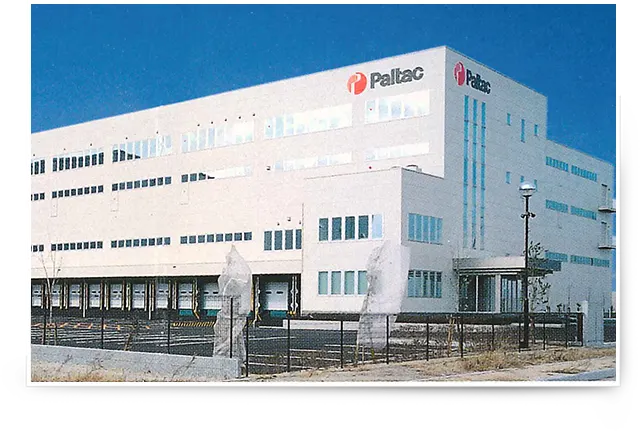

2005- Integration with Mediceo Holdings and entry into pharmaceuticals
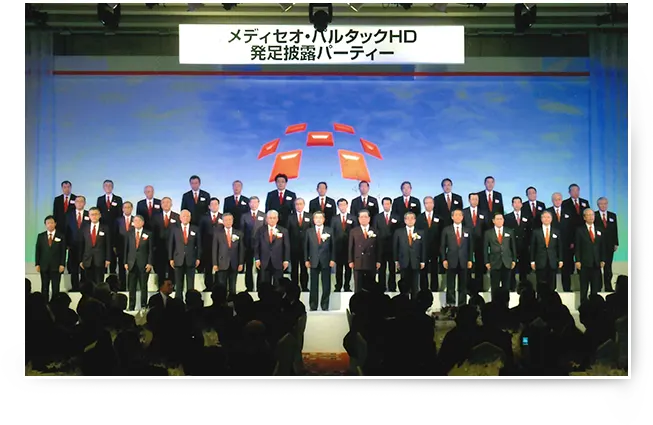
In the 2000s, price competition intensified in the retail market due to the prolonged recession. A series of changes shook the very structure of the distribution industry, including bankruptcies and mergers and acquisitions of major retailers and wholesalers, the landing of foreign-affiliated retailers, the search for direct transactions with manufacturers and system reforms, the establishment of in-house centers by retailers, and the entry of trading companies into the distribution market.
In the meantime, Paltac actively promoted the integration of group companies, construction of RDC, strengthening of the foundation through mergers, enhancement of wholesale and retail solution functions, and reduction of distribution costs, aiming to optimize the distribution industry as a whole.
Against this backdrop, in October 2005, we entered the pharmaceutical business through a business merger with Mediceo Holdings, the largest pharmaceutical wholesaler. This was an evolution aimed at realizing a holistic response in the "beauty and health" domain as a next-generation distributor and pursuing value-added services that would also lead to business reforms for our suppliers.
Selected as a J-Stock stock from the JASDAQ market.
With the establishment of the JASDAQ Securities Exchange, Paltac stock was transferred from the OTC market to the JASDAQ market.
Merged with MEDICEO HOLDINGS through a stock swap.
Merged with Kobashou and changed the company name to Paltac KS Co.
Changed trade name to "Paltac Corporation" in order to become a next-generation distributor.
Announced the start of preparations for listing on the Tokyo Stock Exchange's Department.
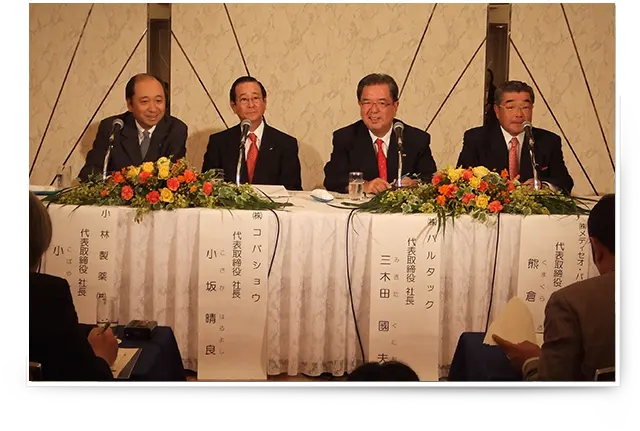

2010- Re-listing of shares and challenge to achieve sales of 1 trillion yen
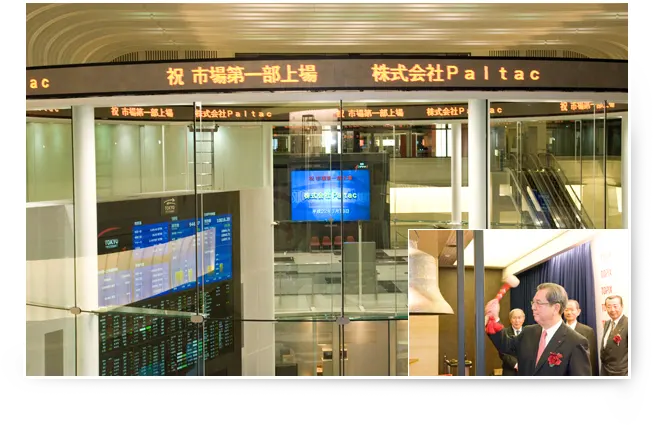
Since the collapse of Lehman Brothers in 2008, the Japanese economy has undergone major changes, including a slump in exports due to the extremely strong yen, the hollowing out of industries, and the emergence of the "working poor" as a result of the increase in non-regular employment. In the midst of these changes, the Japanese economy has undergone a number of major changes. In March 2010, Paltac was listed on the Department of the Tokyo Stock Exchange in order to respond quickly to these changes in the environment and aggressively develop its business. In 2011, Paltac took the opportunity of the Great East Japan Earthquake to strengthen its role as a social infrastructure company by installing emergency in-house power generators at 14 of its major logistics centers and actively working to enhance its business continuity plan (BCP). In 2015, we changed our company name to capital letters and launched a three-year Medium-term Management Plan aimed at strengthening our corporate structure so that we can achieve sales of 1 trillion yen.
Listed on the First Section of the Tokyo Stock Exchange and the First Section of the Osaka Securities Exchange, relisted.
Completed installation of emergency in-house power generators at major distribution centers nationwide
Head office building relocated from Minami-kyuhoji to Honmachibashi 2-46.
Changed the company name to "PALTAC CORPORATION" to ensure sustainable growth and to be a company that continues to take on strong challenges in light of changes in the environment
Merged with Itoshu Shoji Co., Ltd. and established MK Business Headquarters. (currently MK Business Division)
.
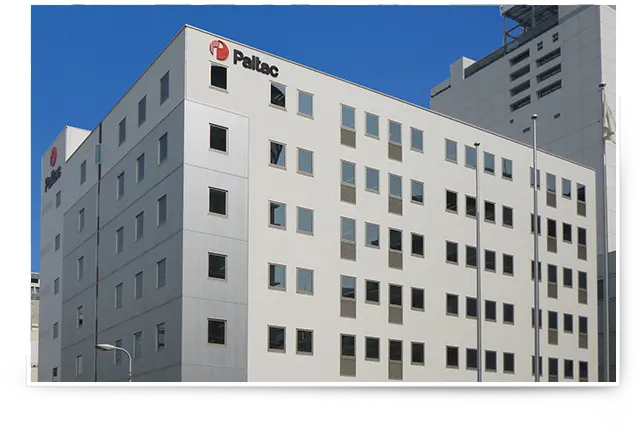

2018- Celebrating 120th anniversary and entering a new stage as a 1 trillion yen company
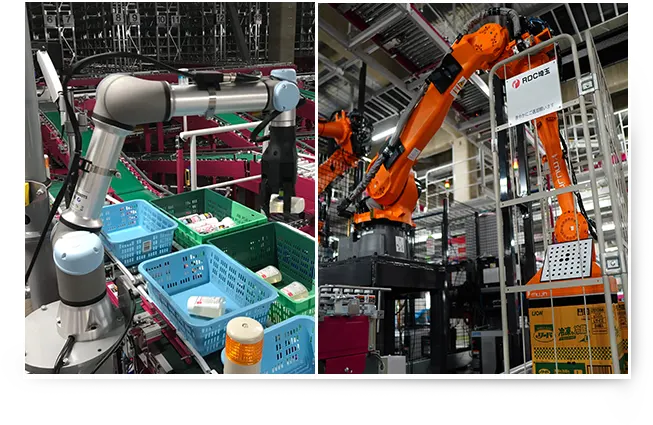
Since 2012, the Japanese economy has been on a gradual recovery trend due to the effects of various policies and favorable conditions in the U.S. stock market, and the market environment in the Cosmetics, Daily necessities, and OTC pharmaceuticals industry has also remained strong due to a pickup in personal consumption with improved consumer confidence and increased inbound demand.
Since around 2018, however, the social and economic environment has become more challenging due to climate change, repeated natural disasters, a slowdown in inbound consumption, and sluggish consumption following a further consumption tax hike.
PALTAC, on the other hand, has been working on research and development of the latest technologies such as AI and robots since 2016 in order to promote logistics improvement and productivity enhancement for further low-cost management and strengthening of the corporate structure, with a view to coping with the coming labor shortage. RDC Saitama, which began operations in 2019, has been working to build a New logistics model for the new era, including the introduction of a new system, SPAID, and the significant automation of the process from receiving to shipping out of the warehouse.
Opened RDC Niigata, the first RDC to introduce SPAID.
Celebrated 120 years in business on Dec 1.
RDC Saitama, which has greatly automated everything from arrival to shipping using the upgraded version of SPAID, has been established.
Shifted from the First Department to the Prime Market in accordance with the revision of the market classification of the Tokyo Stock Exchange.
